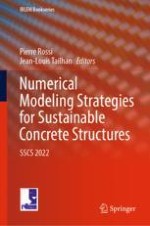2023 | OriginalPaper | Chapter
Virtual Design Laboratory for Sustainable Fiber Reinforced Concrete Structures: From Discrete Fibers to Structural Optimization Under Uncertainty
Authors : Gerrit E. Neu, Vladislav Gudžulic, Günther Meschke
Published in: Numerical Modeling Strategies for Sustainable Concrete Structures
Publisher: Springer International Publishing
Activate our intelligent search to find suitable subject content or patents.
Select sections of text to find matching patents with Artificial Intelligence. powered by
Select sections of text to find additional relevant content using AI-assisted search. powered by
